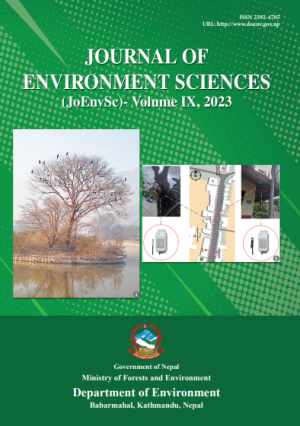Land use land cover change and its implication on water fowl diversity: A case study of Taudaha Lake, Kathmandu, Nepal
DOI:
https://doi.org/10.3126/jes.v9i1.56484Keywords:
Land use change, GIS, Migratory bird, UrbanizationAbstract
The wetlands of Nepal are well known for unusually rich biodiversity. Taudaha is famous for winter migrant water fowls as far as from Siberian. The natural form of Taudaha has been neglected and it is surrounded by concrete homes instead of trees and paddy field. Land use change is often regarded as one of the main reasons for habitat degradation and subsequent decrease in migratory birds’ population. This article aims to quantify the land use change scenario in and around the lake area using GIS tool. Google images from February 2004 and April 2022 were obtained from “Google Earth Pro” software and used to prepare the land use map by using “QGIS 3.12” software. The cultivated land covered about 73.42% of the total study area followed by settlement (8.61%), vegetation (8.02%) and the lake (9.95%) itself in 2004. But 18 years later, in the year 2022, Taudaha is gradually surrounded by urban areas. The cultivated land has been changed to be settlement areas. The cultivated land has decreased for construction of houses, hotels and resorts. Human activities in hotels and resorts near the lake area have caused distraction to migratory birds visiting the lake. This is causing degradation of habitat of the migratory bird species. Literatures showed the declining number of migratory bird species visiting the lake areas during winter.




